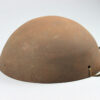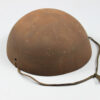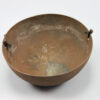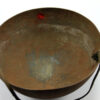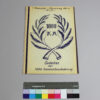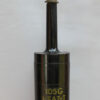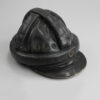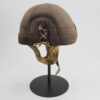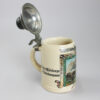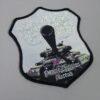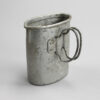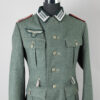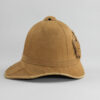French helmet of the First World War – “Cervelière” model
Inventory number: DPM 1.402
There were no steel helmets at the beginning of the First World War. The various nations went into battle with their traditional headgear. The Germans wore their leather pickelhaube, the French their képi, a felt cap.
When the war of movement turned into a war of position in the fall of 1914 and the enemy dug themselves into trenches, the injuries also changed. Now the soldiers were not only at risk from direct hits. The proportion of injuries caused by artillery fragments rose to almost 80 percent – around a quarter of these were head injuries, which killed or horribly mutilated the soldiers.
Steel calottes were hastily produced in France, simple metal hoods with a thickness of 0.5 to 1 mm, which were to be worn under the képi. They were to be sewn into the képi at the side holes. Between the winter of 1914 and March of the following year, 700,000 were delivered, but the soldiers were reluctant to wear them.
Only three sizes were produced, but most of them were the standard medium size. As a result, they did not fit properly and were very uncomfortable to wear: in winter, the steel transferred the cold directly to the head, and in summer, a lot of heat was generated under the calotte. The soldiers began to wear them over the képi, which further reduced the already poor protection.
In February 1915, the French Ministry of War finally commissioned the development of a steel helmet. In September 1915, the distinctive Adrian helmets were issued, which accompanied the French in a modified form until the Second World War.
How the calotte was to be worn can be seen in this historical picture (photo no. 18):
Object of the month
(short) stories from the depot
Unfortunately, many objects cannot currently be shown in the exhibition for conservation reasons. Here you will find unusual objects and exciting stories of special pieces from the depot


